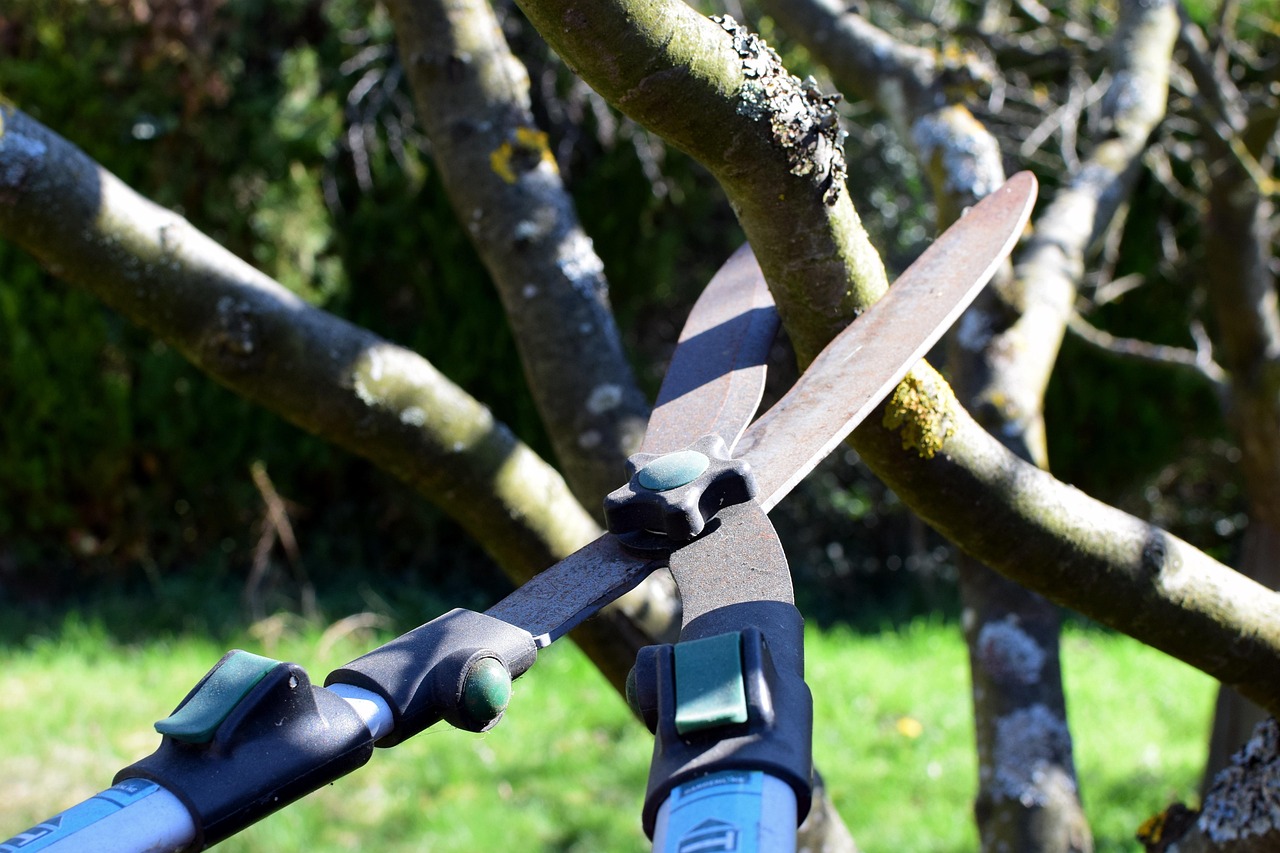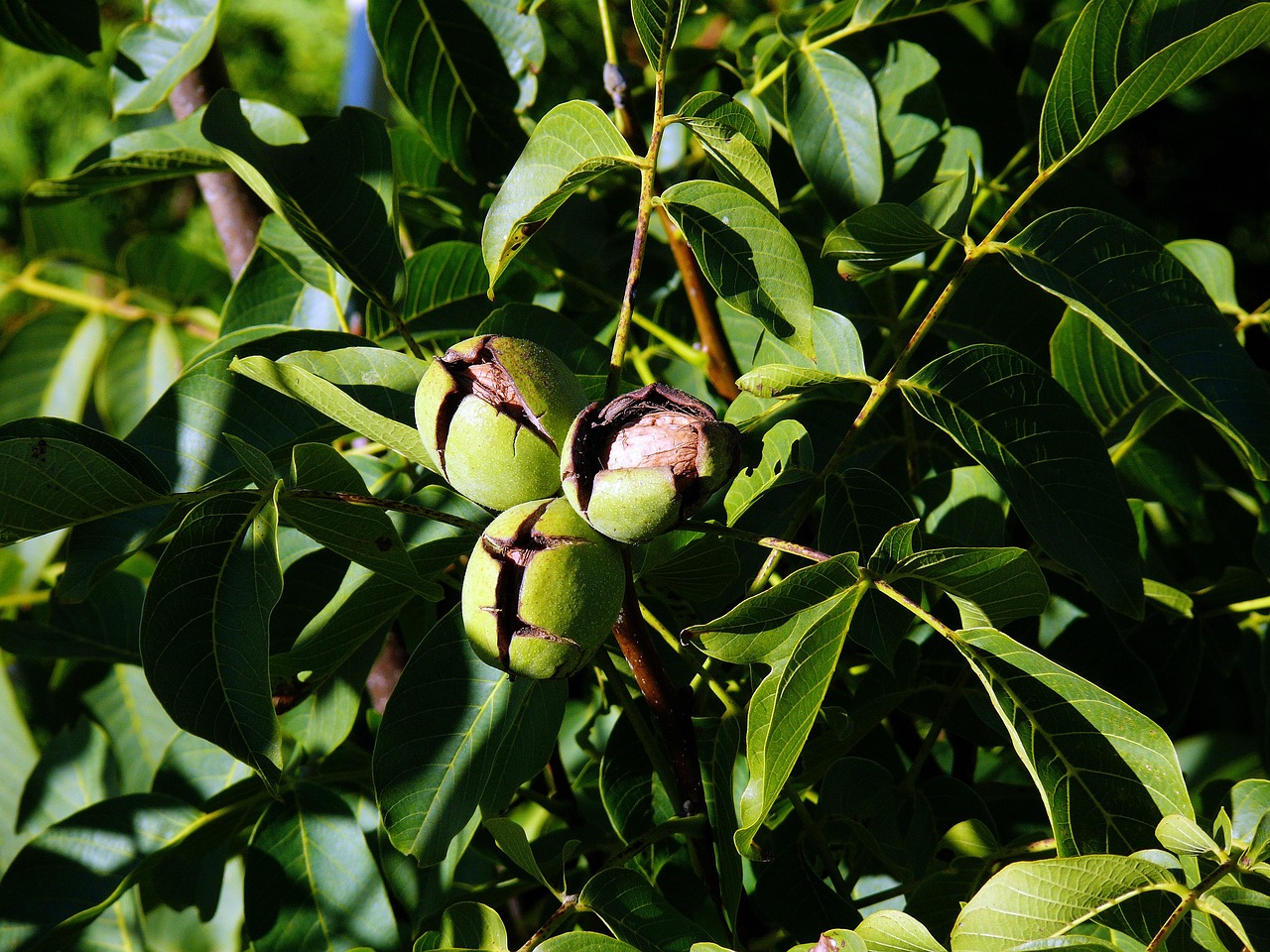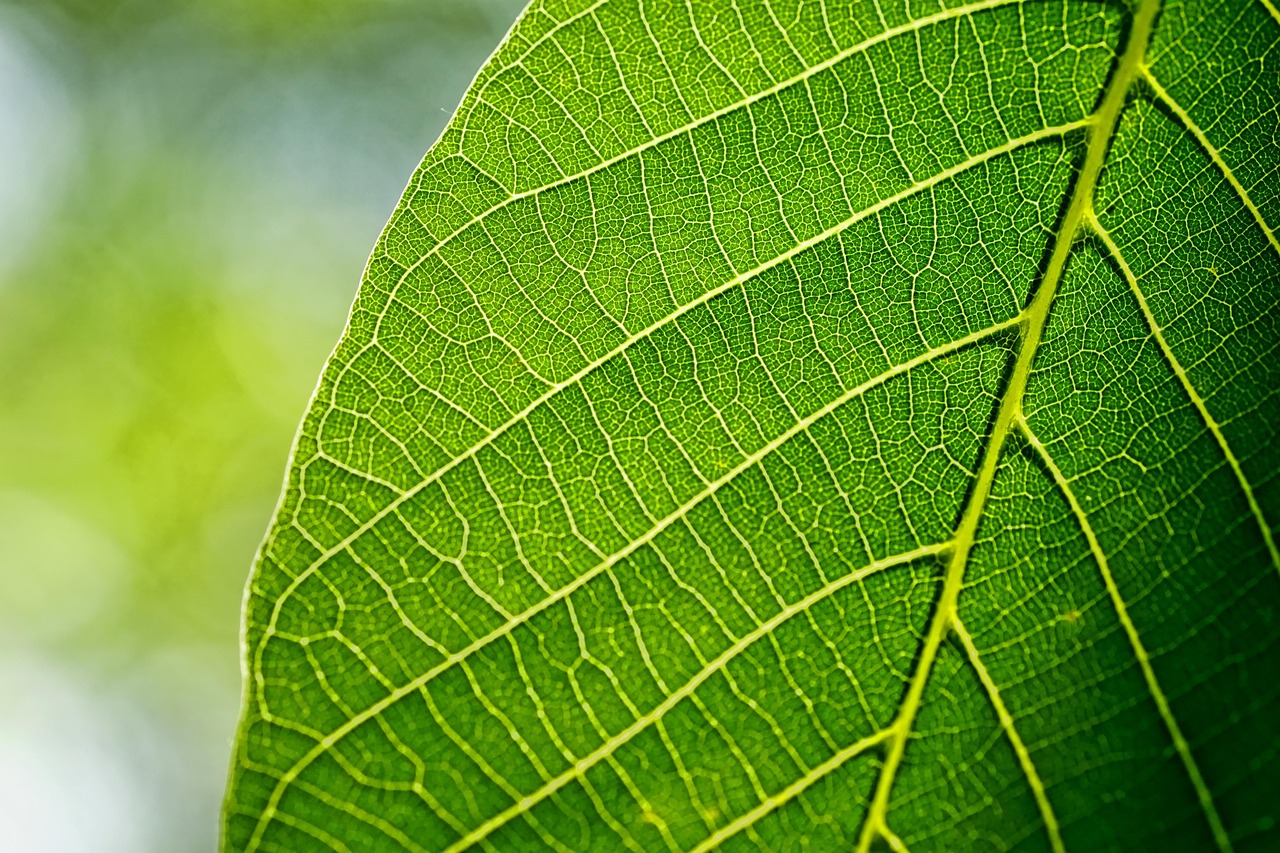Proper pruning of walnut trees is essential for maximizing nut production. It encourages healthy growth, increases light penetration, and improves air circulation. Regular maintenance ensures trees remain productive and reduces the risk of disease.
Walnut trees are valued not only for their delicious nuts but also for their beautiful wood. With the right care, these trees can yield bountiful harvests for many years. Pruning is a crucial part of walnut tree management, impacting both the quantity and quality of nut production. Understanding when and how to prune will help you achieve a healthy and productive tree.

Walnut trees typically require pruning to maintain their shape and encourage growth. The ideal time to prune is during the tree’s dormancy period, usually in late winter or early spring before bud break. This timing minimizes stress on the tree and helps prevent diseases that can occur if cuts are made during active growth.
Benefits of Pruning Walnut Trees
Pruning offers several significant benefits for walnut trees. Here are some key advantages:
- Improved Light Penetration: Removing excess branches allows sunlight to reach more parts of the tree.
- Better Air Circulation: Increased airflow reduces the risk of fungal diseases.
- Enhanced Nut Quality: Fewer branches mean better nutrient distribution, leading to larger, healthier nuts.
- Controlled Growth: Pruning helps manage the tree’s size, making it easier to harvest.
In addition to these benefits, regular pruning can extend the life of the walnut tree. Trees that are not pruned may become overgrown, which can lead to weakened branches that are more prone to breakage. This could result in damage to the tree and a decrease in nut production.

When to Prune Walnut Trees
The timing of pruning is critical for walnut trees. The best practice is to prune during the dormant season. Here are some reasons why this timing is optimal:
- Dormant trees are less susceptible to disease.
- It is easier to see the tree’s structure without leaves.
- Winter pruning can stimulate new growth in the spring.
In general, pruning should be done between late January and early March. However, this may vary based on your local climate. It is essential to monitor local weather patterns and adjust your pruning schedule accordingly.
Tools Needed for Pruning
Having the right tools is essential for effective pruning. Here is a list of tools you might need:

- Hand Pruners: Ideal for small branches.
- Loppers: Useful for cutting thicker branches.
- Saws: Required for larger limbs.
- Safety Gear: Gloves and goggles to protect yourself during pruning.
Ensure that all tools are sharp and clean before starting your pruning task. Dull tools can cause jagged cuts, which may lead to disease entry points in the tree. Cleaning tools with alcohol or bleach will help prevent the spread of infections between trees.
Pruning Techniques
There are several techniques to consider when pruning walnut trees. Each technique serves a specific purpose in promoting healthy growth and nut production.
Crown Thinning
Crown thinning involves removing some of the inner branches of the tree. This process increases light penetration and air circulation. It is important not to remove too many branches at once; aim for about 20% of the inner foliage each year.

Crown Raising
Crown raising is the practice of removing lower branches. This technique helps clear space for machinery and allows better access for harvesting nuts. It also prevents rubbing against other branches, which can cause damage.
Crown Reduction
Crown reduction means shortening the height or spread of a tree. This is useful for managing the size of older walnut trees. When performing crown reduction, be cautious not to remove more than 25% of the tree at one time to avoid stressing it.
Pruning Cuts
The type of cut you make while pruning is just as important as when and how you prune. Here are some recommended cuts:
- Heading Cuts: Used to shorten stems and encourage bushier growth.
- Thinning Cuts: Remove entire branches back to their point of origin, allowing other branches to thrive.
- Shearing: A method used primarily for shaping; however, it may not be ideal for walnut trees as it can lead to weak regrowth.
Understanding these techniques and cuts will set you on the right path toward successful walnut tree pruning, ensuring a robust yield of nuts for years to come.
Common Pruning Mistakes
While pruning is essential for healthy walnut trees, there are common mistakes that many growers make. Avoiding these errors will improve the health and productivity of your trees.
- Over-Pruning: Removing too many branches can stress the tree. This can lead to reduced nut production and, in some cases, tree death.
- Improper Timing: Pruning at the wrong time can expose the tree to diseases. Always prune during the dormant season.
- Using Dull Tools: Dull tools can tear and crush branches instead of making clean cuts. Always ensure your tools are sharp.
- Neglecting Safety: Failing to wear safety gear can lead to injuries. Always use gloves and goggles while pruning.
- Ignoring Tree Structure: Not considering the tree’s natural shape can lead to uneven growth and poor nut production.
By being aware of these common pitfalls, you can take steps to ensure that your pruning efforts are effective and beneficial for your walnut trees.
Signs of a Healthy Walnut Tree
Knowing how to identify a healthy walnut tree can help you understand if your pruning techniques are effective. Here are some signs to look for:
- Vibrant Leaves: Healthy walnut trees will have bright green leaves during the growing season.
- Strong Branch Structure: Look for branches that are thick and sturdy, indicating robust growth.
- Good Nut Production: A healthy walnut tree should produce a consistent yield of nuts each year.
- No Signs of Disease: Check for unusual spots, discoloration, or wilting leaves, which may indicate health issues.
If you notice any signs of poor health, it may be time to reevaluate your care practices, including pruning techniques.
Pest and Disease Management
Healthy walnut trees are less susceptible to pests and diseases. However, even well-maintained trees can face challenges. Here are common pests and diseases that affect walnut trees, along with management strategies:
Pests
- Walnut Husk Fly: This pest lays eggs on the developing nuts. Use insect traps during the growing season to monitor and control this pest.
- Walnut Aphids: These small insects can weaken trees by sucking sap. Insecticidal soap can be effective in managing their populations.
- Root Weevils: These pests feed on roots, causing tree stress. Implementing organic mulches can help deter weevils.
Diseases
- Walnut Canker: This fungal disease causes sunken areas on the bark. Proper pruning techniques and maintaining tree health can help prevent infections.
- Bacterial Blight: Characterized by dark streaks on leaves, this disease can be managed through good sanitation practices and proper pruning.
- Powdery Mildew: This fungal infection appears as a white powder on leaves. Improving air circulation through pruning can help minimize its occurrence.
Regular monitoring of your walnut trees for signs of pests and diseases is critical for early intervention. Taking proactive steps will help maintain their health and productivity.
The Role of Fertilization in Pruning
Fertilization plays a crucial role in the overall health of walnut trees, especially after pruning. Here’s how fertilization impacts tree growth and nut production:
- Nutrient Supply: After pruning, trees need nutrients to recover from the stress of cutting. Fertilizing helps supply essential nutrients.
- Promoting New Growth: A balanced fertilizer will encourage new shoots to develop, which is vital after reducing the tree’s canopy.
- Avoiding Nutrient Deficiency: Regular fertilization prevents deficiencies that may occur due to heavy nut production or poor soil conditions.
The best practice is to conduct a soil test before fertilization. This will help you understand which nutrients are lacking and allow for tailored fertilization strategies.
Watering Considerations After Pruning
Watering is another essential aspect to consider following the pruning process. Proper hydration supports recovery and healthy growth. Here are some watering guidelines for walnut trees post-pruning:
- Monitor Soil Moisture: Ensure that the soil is consistently moist but not waterlogged after pruning.
- Avoid Over-Watering: Too much water can suffocate roots and promote root rot.
- Adjust According to Weather: Increase watering during dry spells, especially after pruning when trees are stressed.
A well-hydrated tree will recover faster from pruning, leading to better growth and nut production in the upcoming seasons.
Best Practices for Walnut Tree Maintenance
Maintaining walnut trees goes beyond pruning and watering. Implementing best practices in overall care ensures healthy growth and maximizes nut production. Here are essential maintenance practices to consider:
Mulching
Applying mulch around the base of walnut trees provides numerous benefits. Here are some important reasons to mulch:
- Moisture Retention: Mulch helps retain soil moisture, reducing the need for frequent watering.
- Weed Control: A layer of mulch suppresses weed growth that competes for nutrients and water.
- Soil Temperature Regulation: Mulch keeps soil temperatures stable, protecting roots from extreme conditions.
Organic mulches, such as wood chips or shredded leaves, break down over time, adding nutrients to the soil. Apply a 2-4 inch layer of mulch around the tree, but ensure it does not touch the trunk to prevent rot.
Soil Health Management
Healthy soil is the foundation for productive walnut trees. Managing soil health involves regularly testing the soil and amending it as needed. Here are some practices to enhance soil quality:
- Regular Soil Testing: Conduct tests every few years to check for nutrient levels and pH balance.
- Adding Organic Matter: Incorporate compost or well-rotted manure to improve soil structure and fertility.
- Avoiding Compaction: Limit foot traffic and heavy equipment around the root zone to prevent soil compaction.
A well-aerated soil allows roots to grow deeper, enhancing nutrient uptake and overall tree health.
Harvesting Walnuts
Once your walnut trees are properly pruned and maintained, the next step is harvesting the nuts. Understanding when and how to harvest is crucial for ensuring quality. Here’s what you need to know:
When to Harvest
Timing is essential when it comes to harvesting walnuts. Here are signs indicating that walnuts are ready for harvest:
- Shell Color Change: The shells will often change color, indicating ripeness. Green hulls may begin to dry out and turn brown.
- Fruit Drop: Walnuts will start to fall from the tree when they are ripe. Collect nuts from the ground promptly to avoid damage or rot.
- Husk Integrity: If the husk splits easily when squeezed, the nuts are likely ready for harvest.
Harvesting Techniques
The method used for harvesting can impact the quality of the nuts. Here are some techniques to ensure a successful harvest:
- Hand Harvesting: For smaller orchards, hand-picking allows careful selection of the best nuts and minimizes damage.
- Mechanical Harvesters: Larger operations may benefit from using mechanical harvesters that efficiently collect nuts from the ground.
- Shaking Trees: Gently shaking branches can help dislodge ripe nuts. Use tarps or nets below to catch falling nuts.
After harvesting, it is vital to clean the nuts by removing any debris or husks before storage.
Nuts Storage and Processing
Proper post-harvest handling is critical for preserving nut quality. Here are essential steps for storing and processing walnuts:
Curing Walnuts
Curing involves drying the nuts after harvesting to enhance flavor and extend shelf life. Here’s how to cure walnuts effectively:
- Drying Location: Choose a well-ventilated area away from direct sunlight to prevent mold growth.
- Duration: Allow nuts to cure for approximately two weeks, turning them occasionally for even drying.
Storage Conditions
Once cured, walnuts should be stored correctly to maintain freshness. Consider these storage tips:
- Airtight Containers: Store cured walnuts in airtight containers or vacuum-sealed bags to keep moisture out.
- Cool Temperatures: Keep stored nuts in a cool, dark place, ideally at temperatures between 32°F and 50°F.
- Avoid Humidity: High humidity can lead to mold growth, so ensure storage areas are dry.
Processing for Market
If you plan to sell your walnuts, consider processing them further. Here are some processing options:
- Shelled Walnuts: Shelling nuts can increase their market value but requires specialized equipment.
- Roasting: Roasting enhances flavor and can be a unique selling point. Ensure proper cooling before packaging.
- Packaging: Use attractive packaging that maintains freshness and appeals to customers.
Understanding these post-harvest processes will help you maximize both quality and profit potential from your walnut production efforts.
Further Considerations for Walnut Tree Cultivation
Walnut tree cultivation involves more than just pruning and harvesting. There are several additional factors to consider that can enhance your overall success. Here are some key considerations when growing and managing walnut trees:
Climate Considerations
Walnut trees thrive in specific climatic conditions. Here are some factors related to climate that affect their growth:
- Temperature: Walnuts prefer a temperate climate, with optimal growth occurring in areas with warm summers and cool winters.
- Frost Sensitivity: Young trees are particularly sensitive to late spring frosts, which can damage new growth. Selecting frost-resistant varieties can mitigate this risk.
- Rainfall: Adequate rainfall is crucial, especially during the nut development stage. However, excessive rain can lead to root diseases.
Monitoring local climate conditions and selecting suitable walnut varieties will help ensure healthy tree growth and productivity.
Pest and Disease Prevention Strategies
Maintaining the health of walnut trees means being proactive in addressing pests and diseases. Consider implementing these strategies:
- Regular Inspections: Routinely check trees for signs of pests or diseases. Early detection is key to effective management.
- Integrated Pest Management (IPM): Use a combination of cultural, biological, and chemical controls to manage pest populations sustainably.
- Planting Companions: Certain plants can deter pests or attract beneficial insects. Research companion planting options that suit walnut trees.
By staying vigilant and adopting preventive measures, you can significantly reduce the impact of pests and diseases on your walnut trees.
Soil Amendment Techniques
Improving soil health is vital for walnut tree cultivation. You can enhance soil quality through several amendment techniques:
- Adding Organic Matter: Regularly incorporate compost or well-decomposed manure to improve soil structure and nutrient availability.
- Utilizing Cover Crops: Planting cover crops such as clover or vetch can enhance soil fertility and prevent erosion during off-seasons.
- Lime Application: If soil tests indicate acidity, applying lime can help adjust pH levels to suit walnut trees, promoting better nutrient uptake.
These soil amendment techniques will create a healthier growing environment for your walnut trees, ultimately leading to better yields.
Future Trends in Walnut Production
The walnut industry is evolving, and staying informed about trends can help you make better decisions for your cultivation practices. Here are some emerging trends to consider:
- Sustainable Practices: Many consumers are looking for sustainably grown products. Implementing eco-friendly farming practices can enhance market appeal.
- Technological Advancements: Innovations in agriculture technology, such as precision farming tools, can help monitor tree health and optimize resource use.
- Diverse Varietals: As consumer preferences shift, exploring different walnut varieties may open new markets and increase production resilience.
By adapting to these trends, you can position your walnut production business for future success.
Final Thoughts
The journey of cultivating walnut trees for nut production involves careful planning and ongoing management. From understanding the importance of pruning techniques to mastering post-harvest processes, each step contributes to the overall health and productivity of your trees. By implementing best practices in maintenance, pest management, and soil health, you can maximize your yield while ensuring the sustainability of your walnut orchards.
Ultimately, successful walnut tree cultivation requires dedication, observation, and adaptability. By staying informed about industry trends and continuously refining your practices, you can achieve not only a bountiful harvest but also a rewarding experience in growing these valuable trees for the long term.
